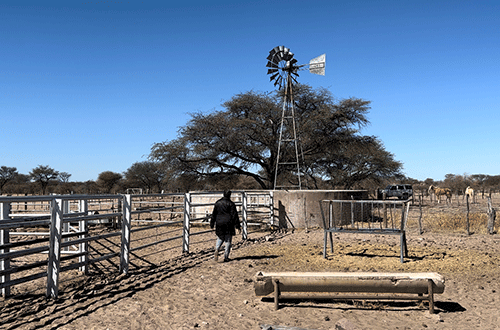Five years later, a paltry 25 of the 169 resolutions taken at the 2018 land indaba have been fully implemented, a draft progress report on the second national land conference reveals.
The resolutions emanated from five thematic areas.
At the moment, the implementation of at least 133 resolutions is ongoing while one is pending.
Ironically, 16 resolutions were already in place before the 2018 assembly, meaning they were adopted at the maiden land conference in 1992.
This technically means, only nine new resolutions have been fully implemented since the last conference.
Although only circulating in the corridors of power, New Era has seen the draft dossier, detailing how far the nation has traversed on the land question since 2018. The report covers the period between October 2018 and May 2023.
Willing-seller
Under commercial land reform thematic pillar, the conference also resolved to abolish the ‘willing-seller, willing-buyer’ policy as a primary land acquisition method.
Instead, it was agreed that land expropriation be within the confines of the Namibian Constitution and should include just compensation.
The conference resolved to expropriate foreign owned agricultural land while underutilised commercial farms owned by Namibians must also be subjected to expropriation.
According to the latest report, the ‘willing-buyer, willing- seller’ and expropriation with commensurate compensation are delivering satisfactory results.
“So far, the market has delivered land for acquisition. However, the pace at which land acquisition can be fastened [Sic] depends on the current status of the economy. It is the status of the economy that informs how much land can be acquired,” reads part of the report.
In 2018, the land reform ministry identified 243 farms totalling 1.16 million hectares owned by foreign nationals for expropriation.
“While this programme continues to receive funding through an annual appropriation, the current economic turbulence did not allow the increase of funds for land purchase,” the document notes.
Most of these farms are either underutilised or owned by absentee landlords, the report further reveals.
“If [the] Ministry of Agriculture, Water and Land Reform’s budget for land acquisition is improved, at a rate of 229 348 hectares (ha) per year, it will take six years to acquire 1.16 million ha.
“Land purchase prices are different for each individual farm even for farms that are located in the same AEZ. Farm prices are fluctuating, thus land will be purchased based on a market value,” the report states.
More so, land expropriation regulations have been finalised and gazetted.
The establishment of the expropriation committee was referred to the thematic area to unpack the work of the committee and advice further.
In addition, it was agreed that the allocation of resettlement farms be on a 70:30 basis in favour of land dispossessed communities and veterans of the liberation struggle and their dependents.
Furthermore, no Namibian will be allowed to own more than one commercial farming unit, it resolved.
On urban land reform, the conference resolved to implement Rent Ordinance Act 13 of 1977, to regulate rent prices. No progress has been made in this regard.
Ancestral land
Among the five thematic areas was the issue of ancestral land claims and restitution, which resulted in the establishment of a commission on ancestral land. This commission submitted its findings to President Hage Geingob a few years ago.
Of the 18 resolutions under this thematic area, only one is done while the implementation of the rest is ongoing, the document shows.
The 2018 conference recommended that the government, “Explicitly acknowledge and accept the principles of restitution, redistribution and security of tenure as key pillars of a revamped land reform framework that will be more responsive to the needs of landless communities.”
It was also recommended that underutilised agricultural (commercial) land owned by absent foreign nationals (absentee landlords) must, in accordance with existing legal provisions, be expropriated.
To this, the progress report retorts: “Expropriation regulations are in place. Insufficient funding may be a challenge in the implementation of this recommendation.”
There are also interesting proposed definitions around ancestral land.
For instance, ancestral land is defined as land that was occupied and utilised by the forebears of indigenous communities.
Meanwhile, ancestral land losses refer to: “Ancestral land that was lost through colonial land dispossession or other forms of contested alienation in both the pre- and post-colonial dispensations. These are working definitions, however, a critical analysis of Article 1 (1) and (4) read together with Article 23 should be made to assess whether colonial dispossession falls under the above-mentioned Articles.”
Whereas: “Ancestral land rights [are] rights to the land that was occupied and utilised by the forebears of indigenous communities, Article 16 negates the rights to ancestral land rights. Article 140 recognises laws that predate the Constitution until such laws are otherwise repealed or declared unconstitutional. It is therefore required to assess whether the ancestral land rights pass the test of Constitutionality given the above Articles.”
Another resolution was that government houses be transferred as rental social houses to regional and local authorities.
Illegal fencing
The government was also directed to assist traditional authorities in enforcing the Communal Land Reform Act of 2002.
This was to arrest the wanton practice of illegal fencing which is rife in communal areas.
It was proposed that the fine for illegal fencing be increased and that traditional authorities be given powers to remove illegal fences.
Based on the draft dossier, reviewed by this paper, before the second national land conference, a total of 107 illegal fences were removed by communal land boards with a total landmass of 30 823 ha.
Otjozondjupa topped the list of illegal fences with 57 fences measuring 18 532 ha, followed by Ohangwena (17 illegal fences) 6 713 ha and Omaheke (18 illegal fences) 3 716 ha. Omusati was in the last spot with 15 illegal fencing stretching 1 862 ha.
-emumbuu@nepc.com.na
Caption:


